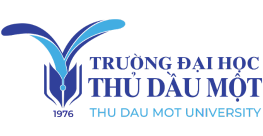Articles
Volume 1 (Issue 1 - 2019)
The Southeast of Vietnam as a cultural zone and roles of culture - people in the sustainable development of the region
Trần Ngọc Thêm
The Southeast plays a very important role in Vietnam’s economic development. Despite a high concentration of social scientists in the Southeast region, there remains a paradox that the Southeast culture has not been sufficiently researched into. Applying the method of cultural zoning based on the changes of the three dimensions Subject – Space - Time developed by the author, the article concludes that the Southeast is a separate cultural zone besides the Southwest and lists some typical characteristics of the Southeast in terms of cultural elements (focusing on the organizational culture) and the system of cultural personality characteristics of Vietnamese people in the Southeast. An analysis of the Human Development Index (HDI) of the Southeast shows that this development is unbalanced and unsustainable. To achieve balance and sustainability, more investment must be made on the culture and the people; community-village type behaviors should be replaced by community-society type behaviors; and the urban way of living, the urban culture and good urban citizen character should be promoed while limiting the rural/agricultural lifestyle and characteristics.
Occupation-based social structure in Binh Duong Province, 1999-2009
Prof. Bui The Cuong, Vũ Mạnh Lợi
Binh Duong has rapidly transformed during the period 1999-2009, from a agricultural province to industrial one. The paper explores the shift of occupation-based social structure of Binh Duong during that period. Using the data sets of Census 1999 and 2009, the paper analyses the evolution of the occupational figure in Binh Duong by ten occupational categories and four occupational strata, and the differences in this figure by residence, gender, ethnic, and religious variables. Findings show that the occupational structure of Binh Duong is more developed than the one of the Southern Key Economic Zone. Its change in rural areas is more significant than in urban areas. There are not considerable differences by gender, ethnicity, and religiousness. The findings are suggestive for a further analysis using the data set of Census 2019 on the evolution of occupational figures in Binh Duong during the previous twenty years (1999-2019).
Cultural practices of the Khmer in Binh Duong - Historical particularism approach
PhD. Tran Hanh Minh Phuong
In 2014, Binh Duong has 2.885 the Khmer people, being the second largest ethnic minority compared to the Hoa people. They have contributed to the multi-ethnic culture of Binh Duong. Hundreds of works on the Khmer in the Mekong Delta considered their culture as a typical of Theravada Buddhist culture in Vietnam but this proposition is not suitable for the Khmer community in An Binh, Phu giao district who is this object of this study. By qualitative data sources from in-depth interviews, participant observations and approach to the historical particularism, this study documented the cultural characteristics of the Khmer in An Binh and analyzed the factors that make culture of the Khmer in An Binh different from the culture of the Khmer in the Mekong Delta. Natural conditions and socio-historical context make the cultural practices of the Khmer in An Binh more similar to the culture of the ethnic groups in the Central Highlands than the Khmer culture in the Mekong delta, especially, customs and folk beliefs.
On the basis of coordinating the sources of history materials from Vietnam and China, together with the latest archaeological achievements of Ho citadel, the article has delineated territory, confirmed the chronology frame with the Kings of this kingdom in relation to post-Champa Empire. It is from the aftermath of Vijaya, the two parts of Aryaru (Phu Yen) and Kauthara (Khanh Hoa) belong to Hoa Anh Kingdom, in which, Le Thanh Tong is crowned as Ban La Tra Duyet; the rebellion of this King is the cause for the second conquest, formally taking Ling Chan/ Da Bia as the landmark; Trai A Ma Phat Am is designated as Hoa Anh’s King on the remaining land of Kauthara, but immediately incorporated into Panduranga, forming the state of post-Champa.
Publication Information
Publisher
Thu Dau Mot University, Viet Nam
Honorary Editor-in-Chief and Chairman of the Editorial Board

Assoc. Prof. Nguyen Van Hiep
Deputy Editor-in-Chief

PhD. Trần Hạnh Minh Phương
Thu Dau Mot University
Thu Dau Mot University
Editorial Board

Prof. Tran Van Doan
Fujen University, Taiwan
Fujen University, Taiwan

Prof. Zafar Uddin Ahmed
Vietnam National University Ho Chi Minh City
Vietnam National University Ho Chi Minh City

Prof.Dr. Phillip G.Cerny
The University of Manchester, United Kingdom
The University of Manchester, United Kingdom

Prof. Ngo Van Le
University of Social Sciences and Humanities (VNU-HCM)
University of Social Sciences and Humanities (VNU-HCM)

Prof. Bui The Cuong
Southern Institute of Social Sciences
Southern Institute of Social Sciences

Prof. Le Quang Tri
Can Tho University
Can Tho University

Assoc. Prof. Nguyen Van Duc
Animal Husbandry Association of Vietnam
Animal Husbandry Association of Vietnam

Assoc. Prof. Ted Yuchung Liu
National Pingtung University, Taiwan
National Pingtung University, Taiwan

PhD. Anita Doraisami
Economics Monash University, Australia
Economics Monash University, Australia

Prof. Dr. Andrew Seddon
Asia Pacific University of Technology & innovation (APU)
Asia Pacific University of Technology & innovation (APU)

Assoc. Prof. Le Tuan Anh
Thu Dau Mot University
Thu Dau Mot University

Prof. Abtar Darshan Singh
Asia Pacific University, Malaysia
Asia Pacific University, Malaysia

Prof.Dr. Ron W.Edwards
The University of Melbourne, Australia
The University of Melbourne, Australia

Assoc. Prof. Hoang Xuan Nien
Thu Dau Mot University
Thu Dau Mot University

PhD. Nguyen Duc Nghia
Vietnam National University Ho Chi Minh City
Vietnam National University Ho Chi Minh City

PhD. Bao Dat
Monash University (Australia)
Monash University (Australia)

PhD. Raqib Chowdhury
Monash University (Australia)
Monash University (Australia)

PhD. Nguyen Hoang Tuan
Thu Dau Mot University
Thu Dau Mot University

PhD. Nguyen Thi Lien Thuong
Thu Dau Mot University
Thu Dau Mot University
Assistant

Nguyen Thi Man
Thu Dau Mot University
Thu Dau Mot University

